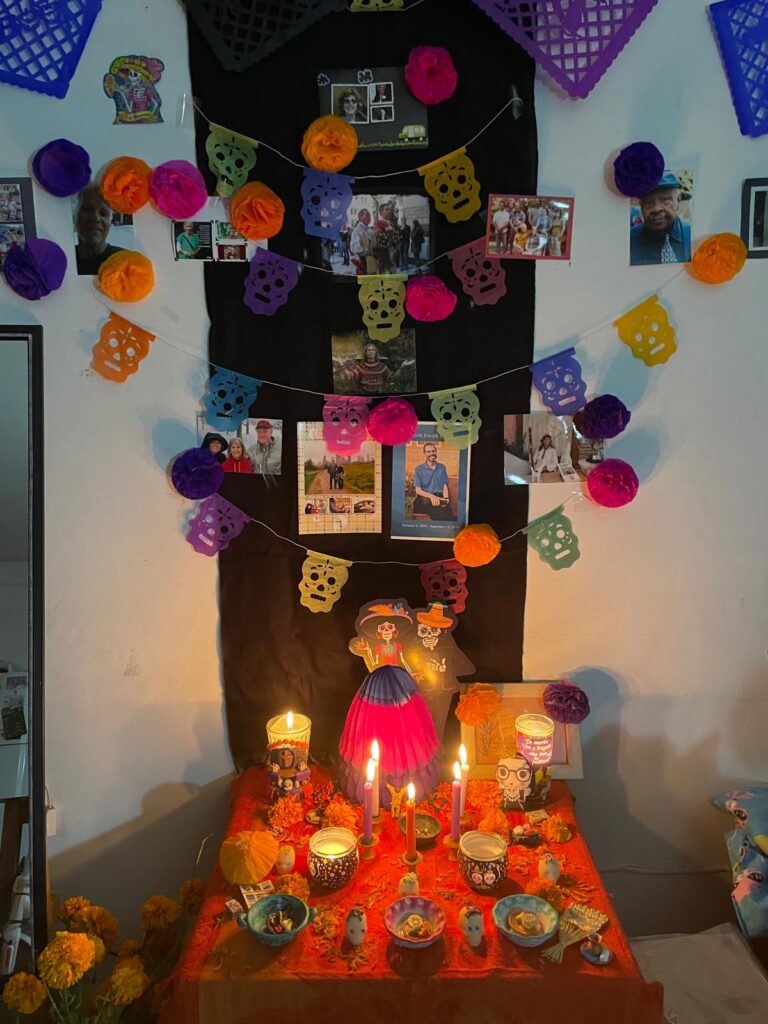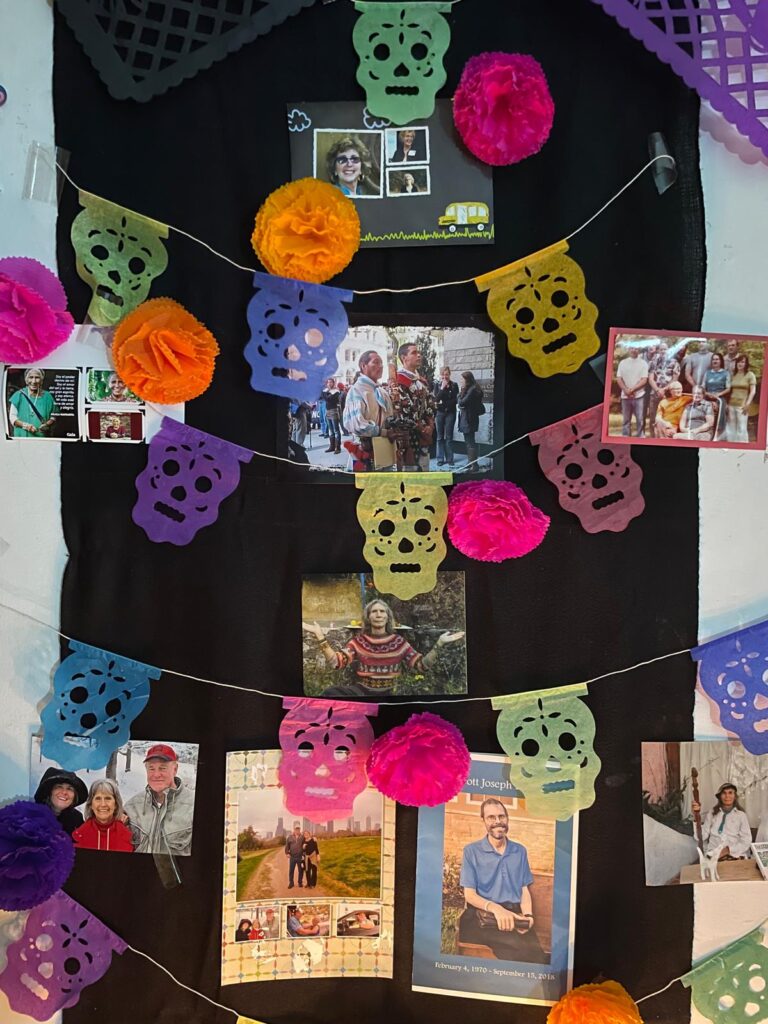The scent of cempasúchil and burning candles drifts through the morning air. Paper skulls of many colors flutter lightly on the wall. I step back to photograph the altar I’ve made for my beloved dead. The movement catches my eye; I reach out, wondering where the breeze might be coming from. Then I realize — it’s the updraft from the candles below, warming the crisp morning air. And I smile, sensing that I am not alone.

Liora beams down from the North. My grandparents, with my uncles and aunt who have gone before, gaze impassively from the East. In the South, as is his custom, stands Coyote Alberto, hands and eyes uplifted to the Great Beyond. To the West, Abuela Margaret wears her crown of flowers, her eyes twinkling as ever.
And in the Center: Yuka+ye, standing with Cilau before the golden doors of First Majestic Silver, unmovable, holding the carved wooden staff of Chief Dan George, a rebuke to the transnational mining empire’s very existence.
Then, closer to the altar, my beloved menfolk — those who left our family far too soon. My father, Gary, smiling lightly in the last snow he would ever be able to enjoy; standing with my mother against the distant towers of downtown Houston; beaming at the baby he lifts from his lap; smiling again from the driver’s seat of my black Toyota Celica at the Mexican border, preparing to drive it back to Missouri as I made my move to Guadalajara.
And the sweet face of my younger brother, Scott — my one and only brother — thin and luminous, resigned to the Lord’s will, holding his Bible like a precious amulet in the cover photo of his funeral announcement.
There are others, too: Eduardo, a dear friend and educator, an émigré from Cuba who spent his life dispelling the nefarious myths about the revolution he had fled; James Ewing, my brother-in-law’s father, an educator who stood strong against the racists who sought to crush the spirit of his community’s children; and Woody, my love, who suffered far more than he ever deserved.
I thought of the words of two Latina friends the other night — one Mexican, one a Mexican-American from New York — as I carefully taped a paper flower to the corner of Liora’s photo. I had asked if they were making their altars. They looked at each other before answering.
“We don’t really do that,” one said.
“It’s a generational thing,” said the Mexican doctor, in her forties.
“Or maybe a class thing,” added the New Yorker, a professional in her fifties.
Their words lingered as I taped a purple flower to the photo of Yuka+ye, who fought for the sacred places of his people — and reminded me that this whole Earth is sacred.
“Oh, what a pity,” I murmured, more to myself than to them.
I was surprised to realize how easily this powerful ceremony — once the spiritual heartbeat of our shared remembrance — has become, for so many, a fanciful and expendable bit of folklore. To be enjoyed in parades and parties, yes — but in the privacy of home, where its spiritual medicine still lives and breathes — no more.
As I placed the final flower, I saw that everyone in that circle had been, in their own way, activists, fighters, and teachers for the better world they knew was possible. I thanked each of them for the torch they had passed to me. What would they say of these perilous times we find ourselves in today? I long for their wisdom, their humor, their creative spark — and I pray for the strength to find those same sparks in myself as I step into the fray.
For me, this ritual is far more than folklore. It is a powerful spiritual technology handed down from the ancestors — at the very least, a beautiful container for ancestral healing, a way to celebrate and mourn our dead. And, if we are very lucky, it becomes something more: a transcendent portal, where for a moment, they are truly here.

Abuela Margarita Alberto Ruz Buenfil Day of the Dead Dia de los Muertos Gary Brunk Jesus Lara Chivarra Liora Adler Scott Brunk Yuka+ye
Previous Next